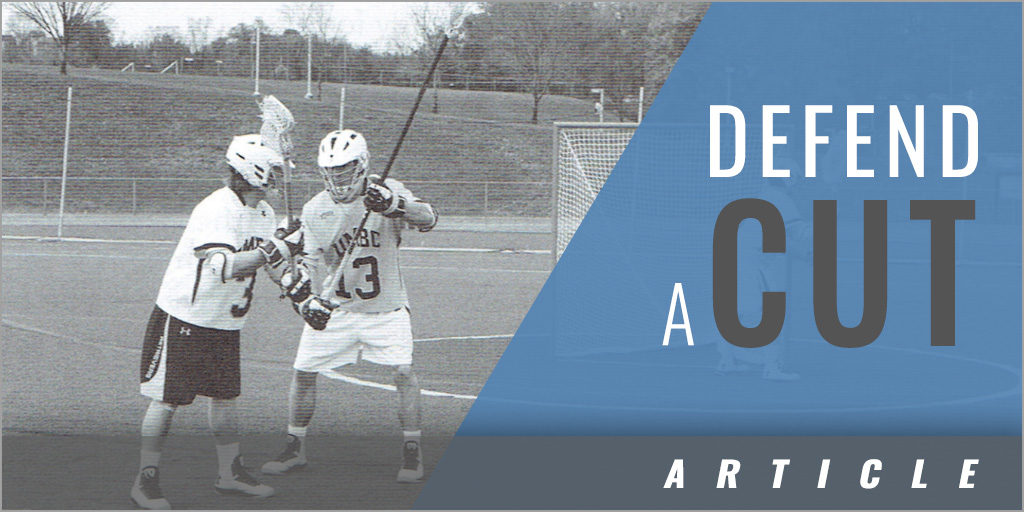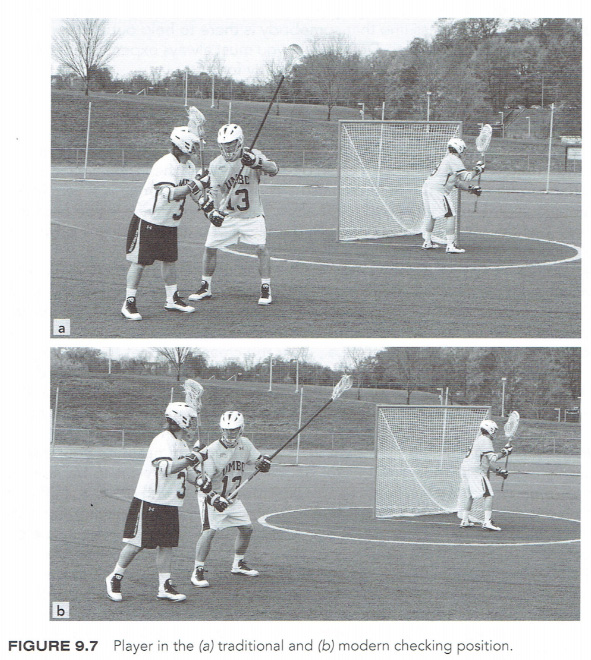|
By: Don Zimmerman and Peter England Originally Published in: Men's Lacrosse Provided by: Human Kinetics A cutter is an off-ball opponent who uses change of direction and change of speed to create space, to break open for a pass, or to get open for a feed. Sometimes an opponent will cut merely to create space for a teammate or to balance up the field. As mentioned earlier, an opponent may cut (using a V-cut) in order to get open for an exchange pass from a teammate. The biggest threat to an off-ball defender is an opponent who can cut to set himself up for a feed with the intention of catching and shooting. The focus here is on this type of cutter running toward the crease in anticipation of a feed for a possible shot (cut to the goal). As soon as you recognize the cut, you must change your vision, body position, and stick position. If your man is cutting, you have to focus on your man, and you have to be able to look ahead and see if there is a pick. Your attention needs to be on the cutter and potential picks. Your head needs to be moving back and forth on a swivel so you can see both your man and the ball. The more you can see, the more you can anticipate. You yell "Cutter" to alert your goalie and your teammates. You listen for a "Check" call from your goalie or a "Pick" call from your teammates. If your man makes a move, the first thing you need to do is drop-step and open up your body position. You want to see if there is a pick coming and then see if you are told to switch. You try to get hip to hip with the cutter so you can run stride for stride with him. Ideally, you will play ball side on the cutter and will be able to see the front of his jersey. In a traditional inside checking position, your stick is straight up and down with your shoulders squared up toward your opponent (see figure 9.7a). In a modern checking position, your stick is in a port position (if you're left-handed, your stick is off your left shoulder) with your opposite shoulder pointing toward your opponent (see figure 9.7b). By turning your shoulders, you automatically load up your stick.
You want to be able to throw checks with your big shoulder muscles rather than just your arms. If you're a right-handed defender playing a right-handed cutter, when you run hip to hip, your stick automatically comes over toward your lead shoulder (so you lead with your stick); you are also able to see the cutter's numbers, and you're ready to check down on his arms. If you're a right-handed defender playing a left-handed cutter, when you run hip to hip, your stick is in a port position; you listen for a check call, and you're ready to check down on his arms. Whether it's a settled or unsettled situation, you are responsible for covering the cutter because he is cutting toward the most dangerous area of the field. You can't let him go unless a switch call is made. If you're playing a man-to-man defense and your man cuts to the goal, you have to cover him unless there is a switch call. In an unsettled situation, you should always go with your cutter, and you should be ready to be bumped off the crease and play someone else. You can't just let your man cut by you because you assume that somebody is there to help out inside or you assume that it's a "dummy cut." Defensively, you must always expect or anticipate the worst-case scenario. That way, you'll be ready for it. |








